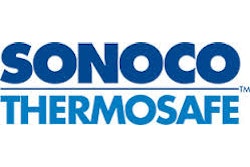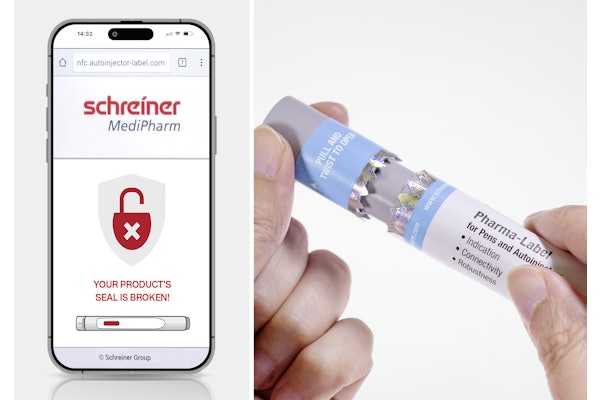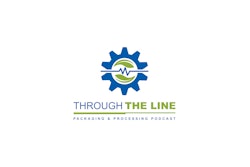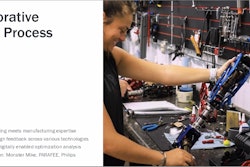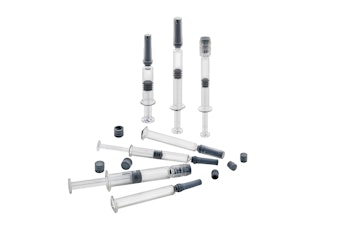Though robust cold chain infrastructure and product protection are critical, it can be difficult to get major changes off the ground, particularly when your organization has been using the same methods for years. “Cold chain packaging will NOT add value to a pharmaceutical shipment,” said Frank Butch, Director of Engineeringat Sonoco ThermoSafe, during his talk at the Healthcare Packaging & Processing Conference co-located with PACK EXPO East in Philadelphia. “Cold chain packaging will preserve the value.”
When new packaging or protocols appear to be more expensive at face value, they can be hard to justify to those holding the purse strings. The first priority must always be product safety, quality and regulatory compliance, but there can be financial advantages to cold chain updates as well. Chris J. Anderson, Director of Quality Systems at Cardinal Health, also talked strategy at the Healthcare Packaging & Processing Conference, including what worked when Cardinal implemented their own award-winning cold chain improvements with efforts from Sonoco ThermoSafe. The two experts brought up many important considerations:
-
Which standards or criteria will you comply with?
With only a few industry standards as guidance for packaging such as ASTM 3103 and ISTA Standard 20, you must decide which tests you’ll run and your acceptance criteria. Which probing locations and testing conditions will you use, particularly if you have distribution channels in different climates? “Finding a hard and fast rule will be very tough for the organization,” said Butch. Anderson added that only five states use words for temperature-controlled shipping, and they are typically vague, so there is no clear regulatory language to follow.
There’s a difference between acceptance criteria from 2 to 8°C versus 1.6 to 8.4°C, and
moving the criteria from 8.0°C to 7.5°C doesn’t necessarily make the design better for your product and situation.
And just as a swimming pool changes temperature slowly compared to a small cup of coffee, a bulk product shipment will change more slowly than a single pre-filled syringe; it’s important to select an appropriate load representation for your product and look at product placement. If the product is far from refrigerants (such as in a large packout) and close to an uncovered wall, environmental heat will affect it more quickly. Data loggers are very sophisticated, but an air temperature measurement near a syringe or small product will offer you a more accurate picture of the total product than a single measurement near a bulk API shipment.
Butch also reminded attendees to keep in mind that some pharma products may include ancillary syringes, CDs and other educational materials.
-
Along these lines, what is an appropriate temperature profile?
The temperature profile should match the shipping lane, so only testing to the harshest condition may not be cost-effective. “More extreme profiles aren’t always better, they’re just tougher,” noted Butch. “If you only ship to Alaska once per year, you’re better off designing a specific Alaska shipment and driving the cost down for standard U.S. shipments.”
In the debate between universal packouts versus seasonal, seasonal will always be less expensive, but that option does increase your risk. Then there are decision points: if your company uses a winter packout from January to April, what will you do on a 70° day in mid-March? Can your operations procedure be flexible enough to say that you’ll use a summer packout on a 70° winter day?
On the flipside, Butch explained the need for clearly defined procedures. If an employee adds an extra gel pack on a hot day, but the packout was already designed for that temperature, the extra pack may freeze the product. “Everybody’s trying to do the right thing. [Employees] shouldn't have to be making judgement calls along the way,” he said. The proper procedure for a given condition “should be built into the design and operations.”
-
What does an excursion mean to your organization?
It may seem obvious, but in order to identify and mitigate excursions properly, you must have clear definitions upfront. You don’t want to leave excursions up to interpretation when issues come up.
Whether or not you chase every single excursion depends on your organization. Is your product irreplaceable? Products such as orphan drugs, personalized doses or cord blood can be truly irreplaceable. If a product is only made once, you have to ensure commensurate protection.
-
What is your organization’s definition of optimization? Is there alignment across quality, operations and logistics?
Different groups can have different goals. And some may be in direct conflict with each other. Operations may want a small, simple system that is easy to pack out. But there’s a cost to that—you may need good insulation with expensive phase change materials. It’s important to define which group is responsible for what element of the cost, such as whether operations is responsible for shipping. Does optimization include quality expenses? Which brings us to…
-
How is total cost calculated?
It can be easy to get caught up in the idea that the current shipper is mere dollars while a new qualified one is hundreds. But whether you acknowledge hidden expenses (like product losses due to packaging) or not, they will cost you money. As an organization, you must define the total cost, including material expenses, shipping expenses, monitoring expenses and quality expenses.
Cardinal Health sought a universal packout solution and intended to keep the shipping totes they had used for years. They realized that phase change material (PCM) was essential for tote qualification due to the shape, design, variable payloads, and seasonal challenges they had. The PCM used in their cold chain tote program is safe and non-toxic, bio-friendly and biodegradable, made of 100% renewable resources (plant-based oils and fatty acids), and approved by the USDA as a bio-preferred product.
Though the cost (based on single use) of the PCM was over 90 times higher than that of their average coolant cost per tote was, the PCM allowed them to:
-
Maintain use of their totes.
-
Use the same packout configuration regardless of season.
-
Standardize operations and customer experience.
-
Remain compliant, with minor loss in shipping payload.
With the new strategy, Cardinal Health was able to reduce product damages by 90% between 2007 and 2015. The return/reclamation rate for the phase change coolant panels is 93% with an average of 87 uses each. More expensive PCMs resulted in lower total cost.
-
What is an appropriate shipper size for my organization?
Shipper sizes should be centered around the highest volumes; understanding the volume breakdowns and the most common order quantities are key to optimization. Butch said, “Each additional size may reduce shipping costs, but can increase complexity and SKUs.”
After improving the product damage rate, the next challenge Cardinal Health set out to tackle was how to cost-effectively ship mixed temperature bulk loads. Dual temperature zone trailers with movable bulkheads were an option, but the bulkheads negatively impacted payload space and had to be adjusted for each shipment. Using multiple trailers at different temperatures did not require bulkheads, but this option was labor-intensive and added additional transportation costs and fossil fuel consumption.
The company sought to customize cold chain pallet shippers that would allow controlled room temperature (CRT) and refrigerated product to be shipped together.
They worked with the manufacturer, performing a year-long pilot with prototypes. After multiple re-design phases based upon users, operations and EH&S, they developed a customized system that was:
-
Stackable and able to fit two-wide in the trailer to maximize payload.
-
Durable, reusable and ergonomically designed for employees and customers. Anderson noted that the new bulk shippers averaged 200 uses each (137,320 shipments) with only 261 units receiving minor damage (a damage rate of 0.0019%). User response has been positive without any reported injuries since implementation.
-
Repairable in-house. Facility maintenance was trained by the manufacturer and repair parts are kept on-site. All damaged units have been repaired in-house and no units have been retired thus far. The vast majority of damages are on the pallet platform (base) and a small amount related to closure latches
-
Qualified for 62 hours. Performing extended-time shipping studies, they were able to collect data for delivery delays and determined shippers could protect up to 72 hours. Anderson encouraged attendees to test beyond their qualification times, which can save shipments that would previously have been thrown out due to weather or other delays.
This system resulted in $2 million annualized savings in transportation expenses and a $5.7 million cost avoidance in additional transportation. Investing in extended-time shipping studies saved the company $2.6 million in the first five months.
-
Will reusable shippers be worth the investment?
Of course, this is highly specific to the product, shippers, refrigerants and customers. Cardinal Health found that the high cost of customized reusable passive packaging could be offset to provide a substantial return when customers engaged in reclamation/reuse processes. After four years of positive results, they’ve proven that this is real and not just theory.
How hard do you want to push to get back one-way solutions? Sending back empty shippers via air isn’t the right solution for everyone. Switching to reusable gel packs, bottles or bricks may make sense, as long as you can get customers to return them.
Anderson noted that pharmacies are typically happy to participate in reclamation projects as it reduces their waste costs. The difficulty lies in hospitals, where material management departments bring the products and packaging in, but the environmental departments deal with the waste. “Departments have to talk to each other in hospitals in order to get those back,” he said.
Though operations personnel in Puerto Rico were not initially interested in the expensive pallet shippers, Anderson said that an emergency situation changed their tune. During Hurricane Sandy, corrugated single-use shippers weren’t available, so the reusable shippers were used as a temporary fix. Operations ended up liking them. Though the shippers cost 10 times more per unit, the costs were offset with increased payload and reuse.
Opening the lines of communication
Butch explained that in some cases, organizations don’t have the difficult conversations with themselves. You have to talk about what the real worst-case scenario is and whether the existing strategies still make sense.
This can be a touchy subject when individuals have put a lot of hard work into existing protocols and systems, but the industry has changed rapidly and a five-year-old design might need updating. As Butch said, “That’s okay. They did the best they could at the time. Regulations change, organizations change.” It’s important to be flexible and understanding.
Anderson noted that legacy practices can present a challenge at some organizations. Employees might say they’ve been doing their job a certain way for decades without any bad news. “But how many times was that product rendered ineffective that [they] didn’t know about.” As Anderson did, it’s important to continually review practices and new technology to ensure that robust systems are in place.



